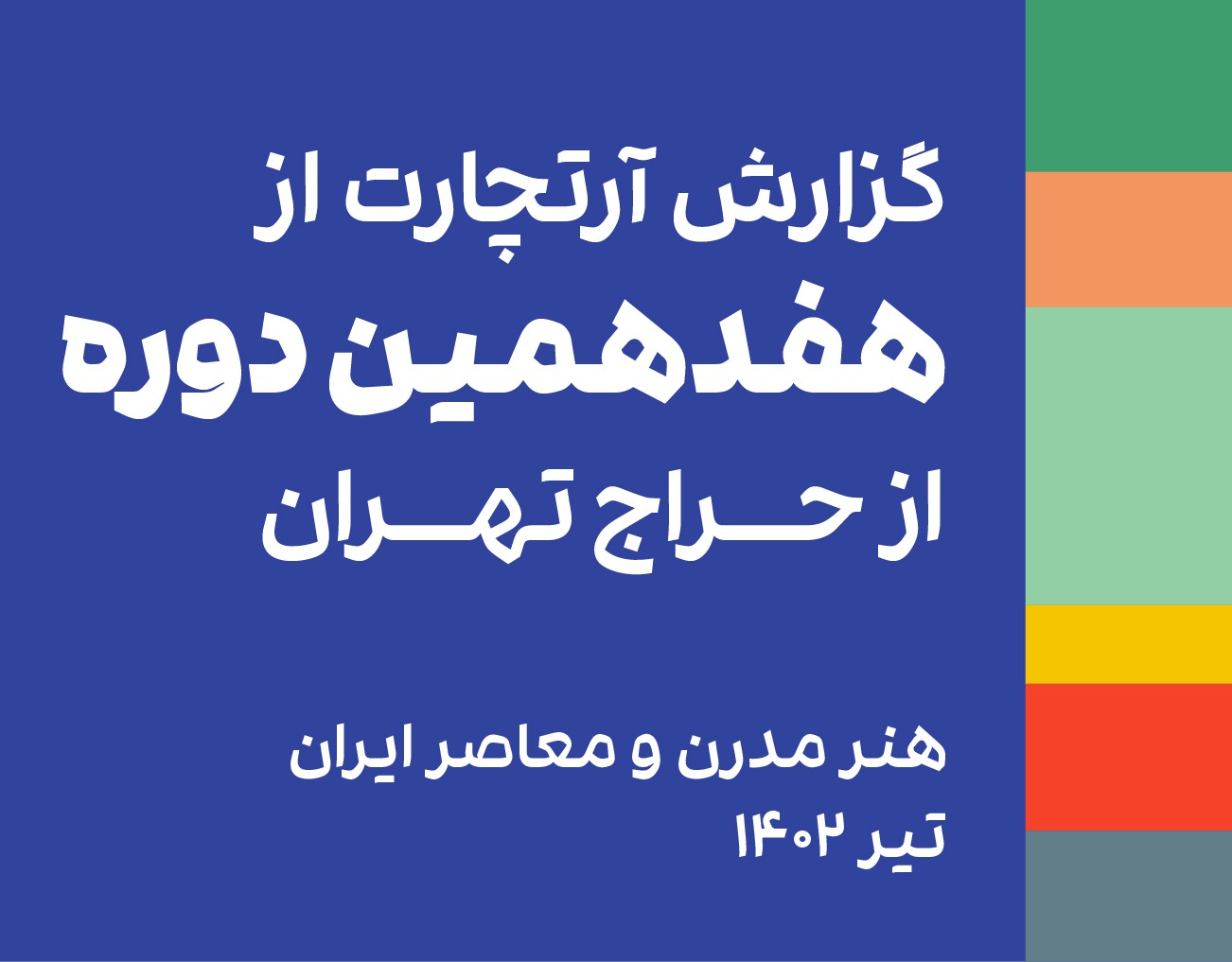About Javad Nobahar
Javad Nobahar, a contemporary painter, was born in Tabriz. He started his art education at Mirak Fine Arts Academy and received a painting diploma in 1986. Then he entered the Art College of Decorative Arts (Art University of Tehran) and completed his bachelor's degree in painting between 1987 and 1991. He also received his master's degree from the same university. In 2004, Nobahar became a member of the Tehran University of Art and taught painting at this university. It was in 1990 that he exhibited his works for the first time in a solo exhibition at Golestan Gallery in Tehran. Since then, he has shown his artwork individually and in groups in galleries inside and outside the country. Nobahar has been selected and won awards in the second and fifth biennials of Iranian contemporary painting and the second biennials of Islamic world painting.
Nobahar was looking for ways to adapt the traditions of Iranian art to the principles of modernism, based on the teachings of professors such as Mohammad Ebrahim Jafari, during his studies at the Art University. Rouyin Pakbaz analyzes this artist's works: "Nobahar initially (in works such as Turkmen's Bride-1992) depicted manifestations of Turkmen culture and art. Later, he turned to the issue of shepherds and flocks. Simplifying shapes and soft colors in mosaic-like compositions is one of the characteristic features of his recent works." After a period of work on the "Daggers" collection, he tries to combine still life with the formal characters of Iranian painting (such as the archetype of a rider, etc.) and uses these two in contrasting scales in a collage-like style next to each other. For example, his "Safe Hunting" painting combines a hill of fruits and tiny horsemen arranged around this central figure. But in Nobahar's later works, the traditional aspect fades, and the breath of still life becomes the main theme of his works, and elements such as apples, pears, fish, and knives are depicted in minimalistic compositions. The decorative character and diverse and happy colors of the first period give way to various grays and achromatic colors. By using textures, an effect of oldness appears in these paintings. In another variation on this theme, the artist adds symbolic meanings to his still life paintings by putting together elements such as knives and rotten fruits, or in another group of his paintings, by repeating the pear shape in horizontal and vertical rows, he creates a similar motif of relatively identical forms.
The Most Expensive Artwork
At Auctions
First Attendance
15 January 2021
# Attendance
6
# Artworks
6
Average Realized Price
4,538 USD
Average Min Estimate
2,767 USD
Average Max Estimate
3,783 USD
Sell-through Rate
83.333%
Average Growth of Artwork Worth
52.524%
Timeline
The 21st Tehran - Contemporary Iranian Art auction
11 October
Recovery/ The Sixth Series exhibition
6 September
Seven exhibition
10 May
+-50 exhibition
15 March
Artibition Auction - March 2024 auction
11 March
Party of colors exhibition
16 February
Human Body exhibition
25 August
The 17th Tehran Modern and Contemporary Iranian Art auction
18 July
Tehran- 16th- Iranian contemporary art auction
1 July
Daggers have no shadow exhibition
24 December
The 14th Tehran- Contemporary Iranian Art auction
12 August
Cow - This Six Years exhibition
21 May
Annual Group Show exhibition
13 March
The 13th Tehran- Modern and Contemporary Iranian Art auction
15 January
The Fourth Annual Auction of Behnam Daheshpour Gallery exhibition
28 June
The 5th Annual Postcard Print Exchange exhibition
20 April
Articles
۱7th Tehran Auction Sales Report 26 July 2023
The 17th Tehran auction: modern and contemporary, was held on Friday July 21st, 2023 at Parsian Azadi Hotel. This auction achieved a total sale of 214 billion tomans equivalent to 4.3 million dollars, which was a growth of 77.8% compared to the previous period. Artchart has observed the 17th Tehran auction in the upcoming report.

